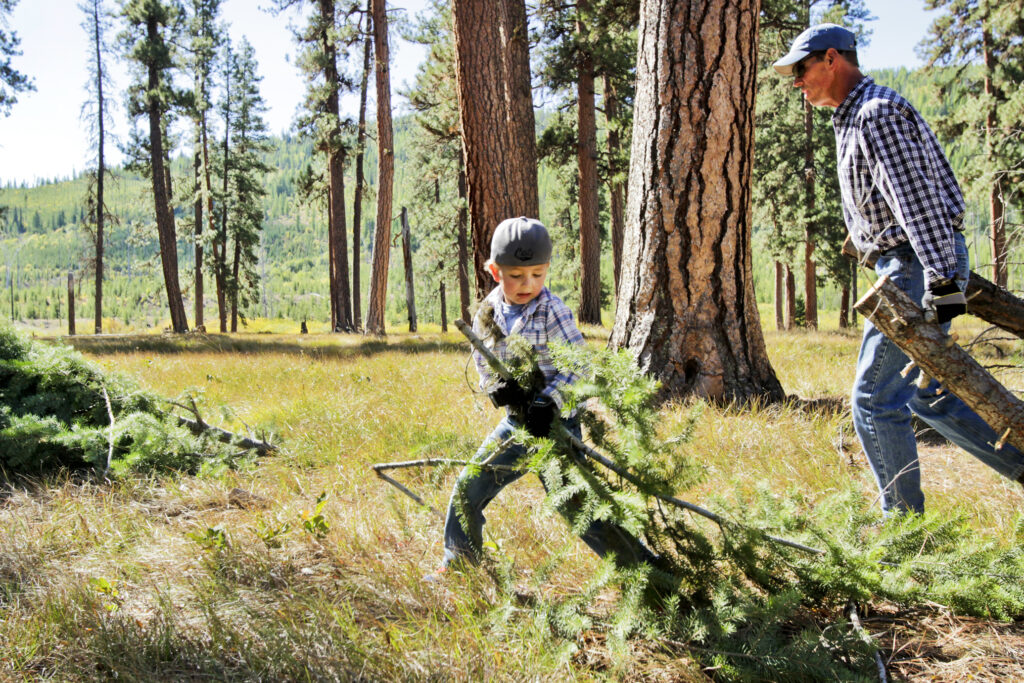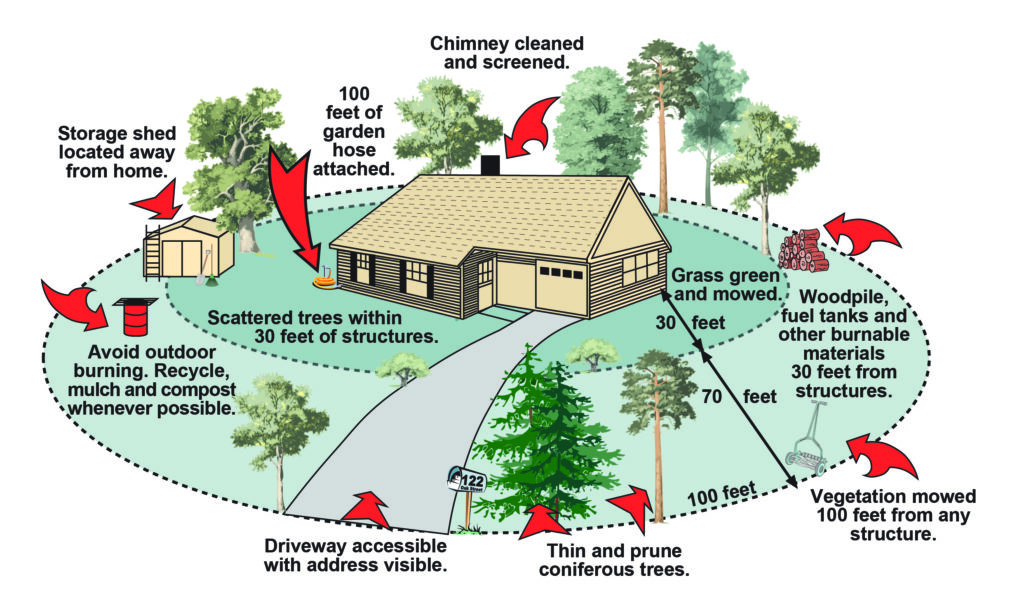Post-treatment Maintenance
As a responsible landowner, you have already taken steps to improve your forested property by participating in our fuels reduction program.
To get the most benefit out of the work you’ve already put in, we recommend the following tips to keep your home, property, and community safe.
Each year or ongoing:
- Always keep your roof, gutters, deck, and the area around your home free of debris that could catch embers.
- Clean up newly-fallen trees, branches, and other flammable debris from the ground.
- Chip, haul away, or pile and burn flammable debris (burn only during open season and under safe conditions).
- Prune shrubs and trees near structures and roads.
- Keep grass mowed to four inches or less around your home, outbuildings, and along access roads. Irrigate grassy areas during fire season.

- Consider removing or replacing flammable items on your porch or next to your house such as wicker furniture or straw brooms. Lawn furniture with vinyl or plastic cushions is also flammable.
- Look for signs of insects or disease in your forest including: pitch tubes, “frass” (fine sawdust) at the base of the tree or in bark crevices, dead or red-colored needles, needle loss, or excessive sap flow.
- Douglas fir trees with fresh fir beetle infestation need to be disposed of prior to April 1 or consider using an alternative forest pest strategy, such as a “trap-tree” or chemicals.
- Pine trees with fresh bark beetle infestation need to be disposed of prior to June 1.
- Contact the Blackfoot Challenge Forestry Coordinator with questions or for more information.
Every five years:
- Consider thinning to promote the growth of healthier trees, reduce fire hazards and susceptibility to insects and diseases. Remember that it is easier to thin trees when they are small.
The Home Ignition Zone

